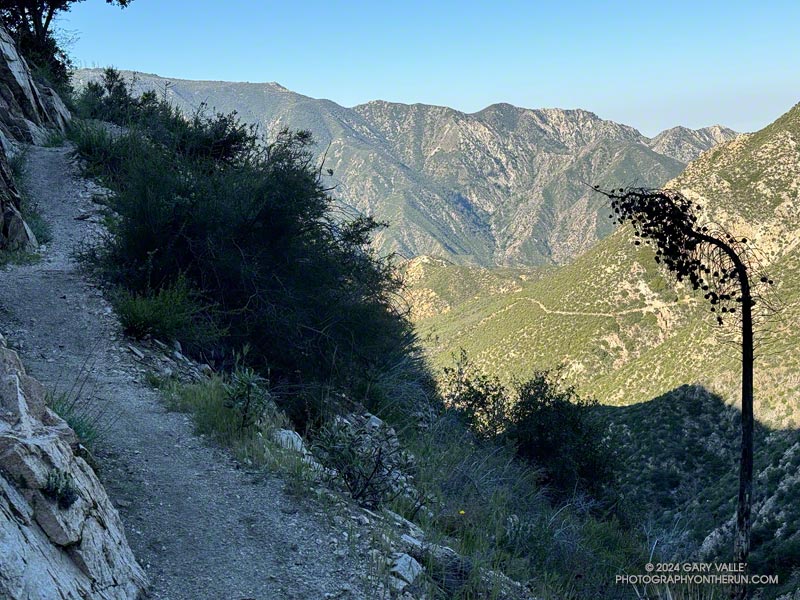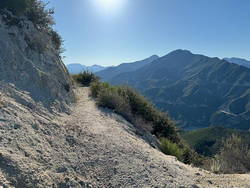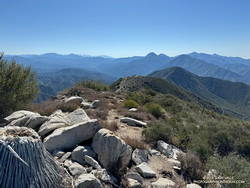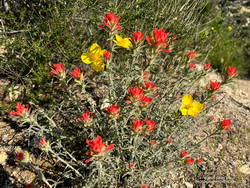
After climbing Condor Peak, I paused along the trail between the peak and Fox Mountain to take a photo. That’s when I heard a loud rattling behind me. I slowly turned around… A very upset snake was in the brush about 15 feet away and continuing to buzz.
Many rattlesnakes I encounter don’t rattle — even if directly on the trail. But for some reason this well-hidden snake was really agitated.

The rattle sounded like that of a mature snake. I briefly considered looking for it. But, I reasoned, if the snake had been kind enough to rattle, then I should return the favor and leave it alone. It was already amped and clearly knew where I was. While I was curious, I didn’t need to see THIS snake. I turned and continued down the trail.
It had been one of those runs where everything goes as planned. Other than the first 50 yards or so of the Vogel Flat Trail — which was in terrible condition — it had been a nice change to be on a “normal” trail. By that, I mean a trail that (generally) wasn’t rutted, overgrown, or washed out. Consecutive wet rain seasons have been hard on lower elevation trails in the Los Angeles area.

I was the first up to the peak, and on the way down passed several small groups of hikers. The topmost group was resting in the shade near Fox Mountain, and the others working up the trail farther down the mountain. All were enjoying the day.
According to the Tempe thermometer on my pack, the temperature climbed steadily from 60 degrees at the start of the run to around 75-80 degrees on Condor Peak. The day wasn’t forecast to be particularly hot — around 85 in the warmer valley locations. But on the return from Condor, the temperature in the sun in the south-facing bowl at the head of Fusier Canyon was in the 90s. This was offset somewhat by the shaded little streams in the corners of the canyon. In some years these have been completely dry.

As elsewhere this Spring, the wildflowers along the trail were spectacular. Some of those in bloom included woolly paintbrush, yellow monkeyflower, chaparral whitethorn, hoary-leaved Ceanothus, bush poppy, collarless California poppy, chia, and black sage. The paintbrush and bush poppy were especially striking.
Here’s an interactive 3D-terrain map of my GPS track (yellow) of the route to Condor Peak, starting near Vogel Flat on Big Tujunga Canyon Road. It’s a strenuous 16-mile run, hike, or ride, with an elevation gain of about 4000′. The summit of Condor (either one) is at about 5441 feet.
Some related posts:
– Condor Peak and Fox Mountain Adventure Run
– Condor Peak Out and Back Adventure Run
– Condor Peak Trail Run
